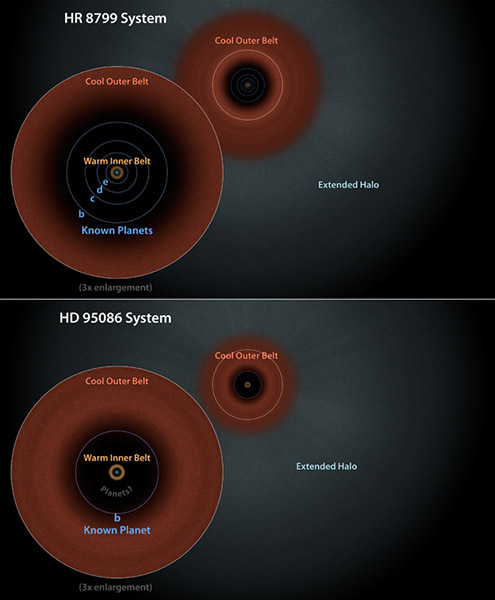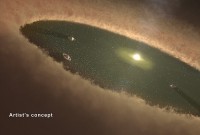This diagram illustrates two similar star systems, HD 95086 and HR 8799. Evidence from NASA’s Spitzer Space Telescope has pointed to the presence of two dust belts in each system: warm, inner belts similar to our solar system’s asteroid belt, and cool, outer belts like our Kuiper belt of icy comets. (NASA/JPL-Caltech)
Home This diagram illustrates two similar star systems, HD 95086 and HR 8799. Evidence from NASA’s Spitzer Space Telescope has pointed to the presence of two dust belts in each system: warm, inner belts similar to our solar system’s asteroid belt, and cool, outer belts like our Kuiper belt of icy comets. (NASA/JPL-Caltech) This diagram illustrates two similar star systems, HD 95086 and HR 8799. Evidence from NASA's Spitzer Space Telescope has pointed to the presence of two dust belts in each system: warm, inner belts similar to our solar system's asteroid belt, and cool, outer belts like our Kuiper belt of icy comets. (NASA/JPL-Caltech)
This diagram illustrates two similar star systems, HD 95086 and HR 8799. Evidence from NASA’s Spitzer Space Telescope has pointed to the presence of two dust belts in each system: warm, inner belts similar to our solar system’s asteroid belt, and cool, outer belts like our Kuiper belt of icy comets. (NASA/JPL-Caltech)



